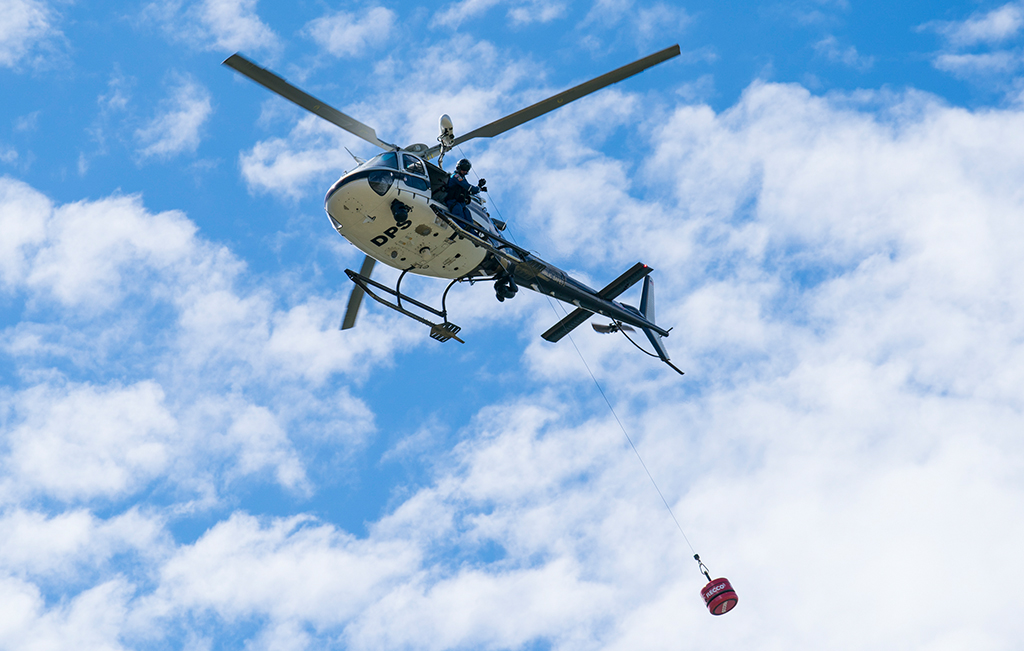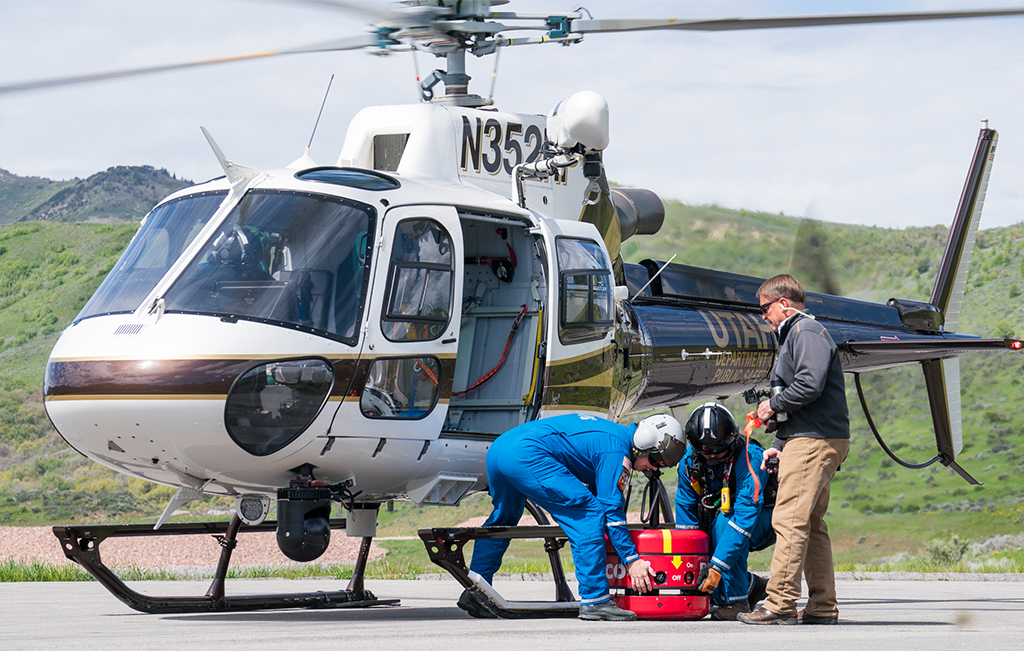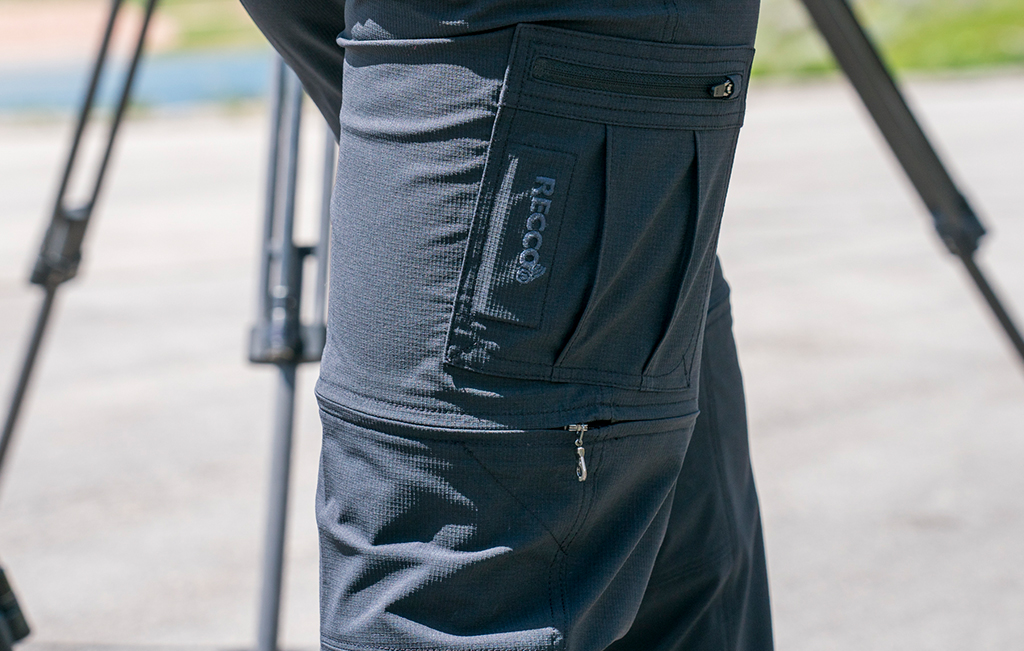The biggest piece of lifesaving gear you carry into the backcountry might not be something you even know you have. It doesn’t need batteries or a subscription. But, in the event of an emergency, it could improve the chances of rescuers finding you.
RECCO®, which has been used in winter apparel and equipment since the 1980s, was developed to make skiers and snowboarders easier to find in the aftermath of an avalanche. The almost-invisible reflectors are sewn or inserted into jacket collars or sleeves, pant hems, ski boots, helmets and more, where they go unnoticed by the wearer but can be detected easily by special detectors. More than 160 ski areas, search-and-rescue outfits, ranger groups and other public safety organizations in the United States use RECCO.

The RECCO detector hangs from a longline attached to the heli. (Photo Credit: Adam Clark; Photo Courtesy: KÜHL)
In the event of a missing-person or avalanche scenario, a patroller will use a handheld RECCO detector to search for the tiny reflectors—similar to how an avalanche transceiver works. (Though in the backcountry, an avalanche beacon should never be replaced by RECCO.) The wearer does not need to do anything to “activate” or “initiate” the rescue.
But there’s a drawback. Because the reflectors need to be detected by handheld units, RECCO has worked best in small or well-defined search areas like the slide path of an avalanche, where searchers could hustle on foot easily. But if someone were to go missing in a wilderness area or a mountain valley, finding them with a RECCO detector would be all but impossible—until now.
RECCO’s first SAR Helicopter Detector, a model developed in 2015, can now do the same thing as the the company’s handheld units, but on a much, much larger scale. The reflector hangs on a longline from the heli and can search a 330-foot circle at any one time. Add in the helicopter moving at 60 miles per hour and the result is a massive, efficient search-and-rescue effort: Operators can search for RECCO reflectors across 250 acres of wilderness in just six minutes.

A search-and-rescue team rigs the RECCO detector. (Photo Credit: Adam Clark; Photo Courtesy: KÜHL)
So far, helicopter-based RECCO units are operated in three locations in North America: Two Bear Air Rescue in Kalispell, Montana; the Utah Department of Public Safety in Salt Lake City; and the North Shore Rescue Group in Vancouver. While training a helicopter unit on using the new RECCO device takes time, the brand predicts it will have two more detectors operational before the end of 2019, and three to four more in 2020.
Enter KÜHL, the first brand to begin utilizing the tech in summertime apparel. Hiking pants and shorts like the Renegade Kargo for men and Horizn for women have RECCO reflectors sewn into folds in the material. KÜHL even made the tech available in the Renegade and Horizn pants and shorts for kids, too. All are machine washable, even with the reflectors.

The KÜHL Renegade Kargo pants have RECCO reflectors. (Photo Credit: Adam Clark; Photo Courtesy: KÜHL)
“There are a ton of hikers getting lost around our hometown every summer, so we jumped on it immediately,” says Doug Heinrich, vice president of product for Salt Lake City-based KÜHL.
While the program is still in its infancy, Heinrich is hopeful it grows quickly into a standard for anyone heading outdoors. “If someone has a RECCO reflector, whether it’s on a mountain bike helmet or a pair of shorts, the likelihood of them being found in an emergency goes up astronomically,” he says, adding that when you factor in that the reflectors are nearly invisible, “there’s really no reason not to have one.”
Editors’ note: RECCO is no substitute for any of the Ten Essentials.
